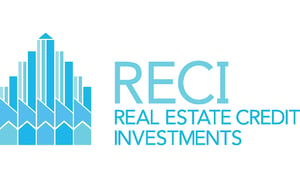Palace Capital PLC (LON:PCA) is the topic of conversation when Hardman and Co’s Research Analyst Mike Foster caught up with DirectorsTalk for an exclusive interview.
Q1: Mike, can you tell us what Palace Capital do?
A1: They are a real estate investment business, not a REIT, with a focus on growing its secure income base through a combination of active asset-by-asset management plans and through a modest amount of redevelopment of assets and that’s the case, even if the redevelopment phase causes a gap in that asset’s income.
The portfolio is robust enough for a strictly constrained portion to be off rent in order to rapidly enhance the rent generation, post development, the proof is in the pudding as they have almost doubled NAV since the initial investment in October 2013.
Q2: What I’d like to talk about is first is the engine room to value creation, so property is often about detail on the ground, can you give us a bit of detail?
A2: Yes, it is. Typically, the company purchases medium-sized portfolios of assets, so the detail is very important both in buying the assets which have the long term strategic fit but also a number of short-medium term uplifts and this is where we see the importance of buying portfolios.
Here, some specific situations give the opportunity to add some value, the key factor is ‘do these assets have strong potential for sustainable rent rises through their location, use or intrinsic factors overlooked by the previous owner?’. The most recent asset management success was just 3 weeks ago, they signed a new 20-year lease with Aldi, the German discount supermarket chain, at its property in Gosport, Hampshire. It secured a 17.4% uplift in rental income, on an RPI uplift lease, through re-gearing the lease from 2030 expiry to 2038 without a break date.
Neil Sinclair, Chief Executive of Palace Capital, commented: “When we acquired the RT Warren portfolio, which was the best portfolio we had seen in the UK property market for some time, we knew that it contained significant latent potential that we would be able to unlock with our asset management expertise, and this new deal is a strong example of that.”
Q3: You say some of the portfolio is development assets, is that right?
A3: Yes, there is one such asset, bought some years ago in a portfolio from Quintain, this was a difficult-to-rent configuration office building, located inside the city walls in York. After some years working up the planning, PCA has achieved permission of a mixed-use scheme which is several residential blocks with a commercial ground floor, this makes up 6% of their NAV now. It’s in the demolition phase now so of course generating zero income, the future income coming off the asset or, much more likely the income off reinvesting the money generated by selling the asset, will therefore boost their income significantly. We calculate this uplift as being in the region of a 16% boost to the group as a whole.
Q4: So, York’s boost to the group income could come out at 16%, let’s look at the whole group’s top-level asset strategy, does it favour certain asset types?
A4: In a nutshell, regional offices suffered from great oversupply in the late 1990’s and early 2000’s with new development, sentiment has never really recovered.
45% of current passing rent of the group comes from this segment, which typically yields over 6%, sometimes well over. Supply has reduced in many localities, remember this is zero in London, in large part through a planning change, hugely encouraging change from B1A offices to C3 residential, initiated from 2013. Other UK property companies are investing on this basis now, but Palace has been fleet of foot and made a significantly overweight play here. 14% only of its rental income derives from retail and 5% from retail warehouses.
We would argue these individual assets are, on balance, strategically well placed.
Q5: Isn’t the larger picture more important?
A5: Palace Capital has nothing in inner London, minimum in retail and well overweight in regional offices with near half of its assets there, the drive is to create a secure, high and growing income stream. I’d like to talk a bit more on that.
Q6: Do you want to give us some numbers on the income then?
A6: At this stage, the share price, the dividend yield is 6.4% and the dividend up 3% last year we see rising this year. The number of shares in issue rose exactly a year ago through a £70 million equity raise, funding the £68 million RT Warren portfolio acquisition. That paid for that acquisition and this at the time reduced LTV, that’s the ratio of loans to value of assets, to a conservative 30% from 37% prior year. That gave the financial fire power to execute the redevelopment of the York site, all on their books without pushing debt too high for the conservative management’s comfort. So, the dividend per share is not covered by earnings per share this year.
We emphasise the dividend is expected to rise, and this year suffers the hit of nil income from York also the cost of the development finance and also the enlarged share capital. Optimisation of the York development upside requires tying up of an asset valued at £1 6 million yielding nil. Further, there are progressive development construction costs of more than £30 million.
Q7: So, I guess it’s a bit like changing down a gear in order to boost the acceleration?
A7: Well there is a current year one-year-only cost in terms of earnings per share, or EPS, put it that way so if you were to do a theoretical proforma adding 16% to this year’s earnings per share, to give a glimpse of the future potential once York is done and reinvested, you get our current 2019 EPS estimate of 17.2p, you add 16% illustration and you get 20.0p. Remember, our 2019 estimated dividend is 19.2p.
Q8: There are always risks though, wouldn’t you say?
A8: Yes, £33.5 million of cash and debt facilities are available for further funding and whilst the dividends are uncovered this year we’ve explained this is entirely due to the York development.
York’s location, macro and micro, is strong and this is a straightforward physical build but is all done at their risk, not selling forward at the time of demolition at least. Average lease length for the group is just over 5 years, similar to the IPD UK average but of course this leave scope for voids and rent-free negotiations to be features.
In leisure, two assets comprising 19% of passing rent, the rents are in-line overall with current markets. In offices, the big sector, there is some reversionary upwards potential. The largest retail tenant is Wickes, a good covenant, but overall the sub-sector is exposed to downside.
Q9: So, there are some moving parts, 6% NAV comprising of a demolished site with nearly half assets in a particularly encouraging regional office sector and with some small asset-management initiatives making a real cumulative difference. How would you sum the investment case up?
A9: Their focus is on total property return, not just about income yield on Day 1, this is about getting that yield and at the same time being in good locations in assets which can be repositioned and refurbished. These will be close to railway hubs, in university towns and cities where PD, permitted development, has taken stock out of circulation and is pushing up rents.
I’d like to give a bit more on where their shares stand.
Q10: Do you want to sum up how you see the valuation for Palace Capital?
A10: The shares have, as have many others in the sector, been under pressure, the market has no patience to wait for the earnings uplift from York so has focused on the large equity issue of late 2017 to fund the RT Warren acquisition and the York development capital. Both RT Warren and York’s development are really special, positive situations.
The stock-market likes most property companies focused on assets with high, secure, growing, long term income, they tick all four of those boxes but there would appear to be a sentiment-driven discount. Investors have this stock on a 30% discount to NAV, Net Asset Value, and a 6.4% dividend yield. Just like in the real-estate market, regional offices are not yet perceived as premium assets so are cheap. That is, we consider, a good thing for PCA investors who have bought high quality cheaply.
The stock market tends not to like property companies issuing equity at a discount to NAV but the combination of the excellent RT Warren deal, we’ve only sketch details here, and the York construction funding makes a very compelling case for that issue which is in the rear view mirror.
Their NAV growth has been sector-leading, and clarity of future potential is high given the offices, York and other positives. It’s acquired portfolios with inherent opportunities for value creation and is, and will be, delivering on that. We note that PCA has not bought anything in the past 12 months despite having the fire power, this is an investment into prudence and patience.












































